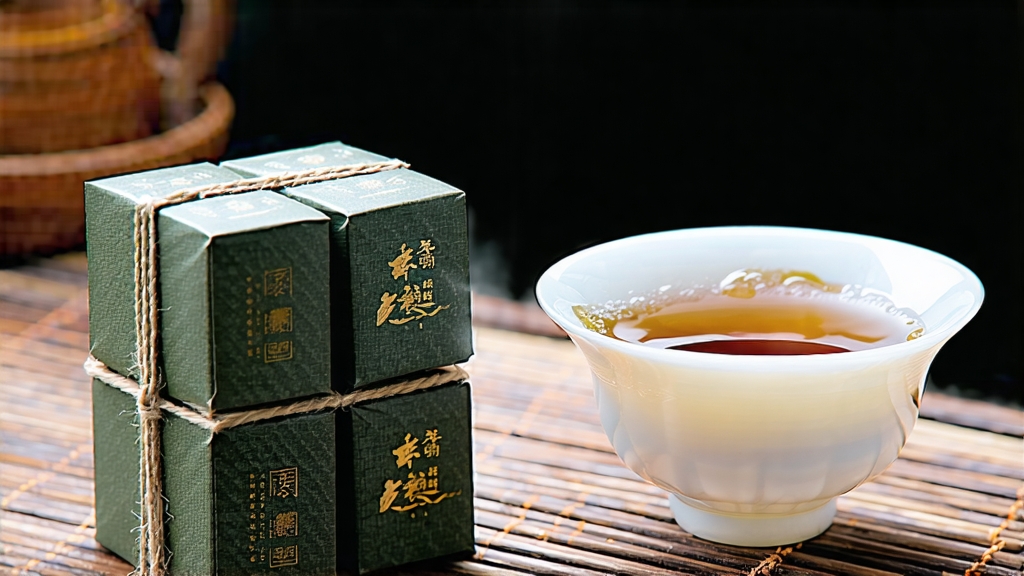
Tucked away in the humid, karst-pocked mountains of southern China’s Guangxi Zhuang Autonomous Region lies a tea that once rode the ancient Tea-Horse Road north to Mongolia and west to Tibet, yet remains almost unknown outside Asia. Called Liu Bao—literally “Six Forts” after the six stockades that once protected the small river town of Wuzhou—it is the quietest celebrity of the Chinese dark-tea family. While Pu-erh grabs headlines and Fu bricks flirt with dramatic golden flowers, Liu Bao prefers to mature in woven bamboo baskets, slowly digesting the subtropical air until its leaves glow like antique mahogany and its liquor tastes of sweet betel nut, damp earth, and a fleeting trace of orchid. This article invites the global tea traveler to discover Liu Bao’s 1,500-year story, its two distinct processing styles, the microbe-driven magic that turns bitter leaf into liquid velvet, and the simple gongfu ritual that releases its mountain-and-monsoon memories into your cup.
History: From Border Stockade to Imperial Tribute
Liu Bao’s first written record appears in the Liang Dynasty (502–557 CE), when the local Yao and Han peoples traded compressed tea cakes for salt and horses. By the Ming (1368–1644), the tea had become a strategic barter commodity on the Tea-Horse Road; caravans left Wuzhou with 30-kg bamboo baskets, each stamped with the imperial dragon, and returned with Tibetan warhorses. The Qing court formally listed Liu Bao as “gong cha” (tribute tea) in 1796, and the port of Guangzhou shipped it to Southeast Asia where miners in Malaya’s tin belts drank it to ward off malaria and dampness. In the 1970s, when Malaysia’s tin boom ended, forgotten baskets languished in cool Hakka clan halls; twenty years later, collectors discovered that the tea inside had transmuted into a dark, fragrant treasure, sparking the current renaissance.
Terroir: Where Rivers, Rocks and Microbes Collide
Liu Bao is protected under China’s National Geographic Indication; only leaf picked within the 55,000-hectare micro-zone around Wuzhou may bear the name. The region sits at 23–24 °N, where the Xun and Gui Rivers converge, wrapping the tea mountains in a perpetual, jasmine-scented mist. The soil is a well-drained, iron-rich laterite formed from weathered limestone; its alkaline pH encourages the growth of Eurotium cristatum and other beneficial molds that will later populate the aging tea. Daytime temperatures hover around 30 °C with 85 % humidity—conditions so close to a natural wet-pile that locals joke the mountains themselves “ferment” the leaf.
Cultivars: Two Bushes, Two Destinies
Most Liu Bao is made from the native Wuzhou medium-leaf cultivar (Camellia sinensis var. sinensis ‘WX-1’), prized for its thick cuticle and high polyphenol content. Since 2003, clonal Yunnan Da-Ye cuttings have been experimentally planted on higher slopes; they yield a bolder, more astringent leaf that ages faster but lacks the classical betel-nut finish. Purists insist that only WX-1 grown above 300 m deserves the name “shan cha” (mountain tea), while valley teas are called “tian cha” (field tea) and regarded as blending stock.
Harvest Calendar: Picking the Monsoon
The picking season follows the lunar calendar. Spring harvest (qing ming to li xia) produces the most fragrant but lightest body; summer rain leaf (mang zhong to xiao shu) delivers the highest microbial load and richest mouthfeel; autumn (li qiu to han lu) balances aroma and body, making it the preferred choice for long aging. Leaves are picked as a standard one-bud-two-leaf set, but with an unusual twist: the petiole is left intentionally long (5–7 mm) to create micro-channels for moisture during piling.
Crafting Liu Bao: The Double Fermentation
Unlike Pu-erh, Liu Bao undergoes a unique “double fermentation” that blends Qing-era folk wisdom with modern hygiene standards.
- Primary Kill-Green: 30 kg of fresh leaf are tumble-roasted in a 200 °C bamboo drum for